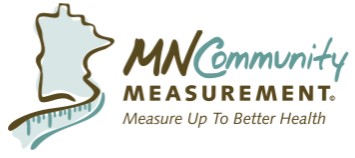Mankato Clinic Recognized for Teen Mental Health Screening and Immunizations for Adults
October 5, 2021

Monday, March 20, 2017
The Mankato Clinic is among the highest performing medical group in Minnesota for Teen Mental Health Screening and Immunizations for Adolescents.
The number of Minnesota teens receiving a mental health screening increased between 2015 and 2016. Likewise, the number of Minnesota adolescents receiving recommended immunizations also increased from the previous year. These findings, and results of more than 30 individual clinical quality measures, are part of a new report published March 2 by MN Community Measurement (MNCM).
The annual MNCM Health Care Quality Report, now in its 13th edition, compares clinic, medical group and hospital performance on clinical measures related to preventive and chronic care, hospital care and health information technology. An objective of the Health Care Quality Report is to provide reliable information to support medical group quality improvement. An equally important objective is greater health care transparency by sharing results with the public at-large.
The report can be found here.
“This report provides valid and reliable information to help consumers make informed decisions about their health care,” said Jim Chase, MNCM President. “This report also contains actionable, reliable and comparable information for providers to use in their efforts to improve patient care and outcomes.”
Examples of Health Care Quality Report results:
• The statewide screening rate for Teen Mental Health Screening increased from 40 percent in 2015 to 64 percent in 2016. This is a 24 percentage point increase in adolescent patients receiving mental health and/or depression screening at a well-child visit. This means that 64 out of 100 youth ages 12 through 17 were screened for depression and other mental health conditions at their well child exams. The Teen Mental Health Screening measure notes how many patients age 12 through 17 were screened for social, emotional and behavioral disorders by their primary care provider at a well-child visit.
• The statewide rate for Immunizations for Adolescents increased from 75 percent in 2015 to 85 percent in 2016. This is a 10 percentage point increase in adolescents receiving immunization. This means 85 of 100 adolescents had their meningococcal and either Tdap or Td vaccines by their 13th birthday. This measure is calculated both on a statewide basis as noted above, and also an average of all medical groups reporting. The rate of Immunizations for Adolescents by all reporting medical groups, and reported on MNHealthScores.org, is 87 percent. The Immunizations for Adolescents measure shows how well Minnesota health care providers performed in keeping adolescents current on meningococcal (meningitis) and either Tdap (tetanus, diphtheria and pertussis) or Td (tetanus and diphtheria) vaccines.
“These results show that when Minnesota providers focus on a particular area, there can be a substantial positive impact,” said Chase.
Additional Health Care Quality Report key results
Two clinical measures showed noticeable improvement in their statewide rates:
• Pediatric Preventive Care: Overweight Counseling – The statewide rate increased from 85 percent in 2015 to 89 percent in 2016.
• Optimal Asthma Control – Adults – The statewide rate increased from 52 percent in 2015 to 55 percent in 2016.
Thirteen other clinical measures showed some small improvements in their statewide rates. Measures with increases or noted improvement include Childhood Immunization Status (Combo 3); Chlamydia Screening in Women; Appropriate Testing for Children with Pharyngitis; Appropriate Treatment for Children with Upper Respiratory Infections; Colorectal Cancer Screening; Breast Cancer Screening; Use of Spirometry Testing in the Assessment of Chronic Obstructive Pulmonary Disease; Follow-up Care for Children Prescribed Attention Deficit Hyperactivity Disorder (ADHD) Medication; Total Knee Replacement pre-op and post-op; Spinal Surgery Discectomy/Laminotomy Functional Status; Spinal Surgery Discectomy/Laminotomy pre-op and post-op; Spinal Surgery Lumbar Fusion pre-op and post-op and Maternity Care: C-Section Rate.
Six medical groups achieved rates that were above average for a cluster of primary care measures. Julie Gerndt, MD, is Chief Medical Officer at Mankato Clinic and was not surprised that Mankato Clinic was among the high performing medical groups across Minnesota.
“We expected to do well based on the commitment we made as an organization several years ago to redesign our care model for better patient outcomes,” said Dr. Gerndt. “That work is paying off.”
Park Nicollet Health, HealthPartners Clinics, Mankato Clinic, Stillwater Medical Group, Fairview Health Services and Allina Health each achieved above-average rates on at least half of the primary care clinical measures.
“These results validate that if you keep working at this over time and make it a priority, you can have an impact,” said Dr. Gerndt.
The Health Care Quality Report is organized for ease of use to both the clinician and the public at-large. The report contains easy to read tables for specific conditions or procedures, grouped by large and moderate improvement, increase or decrease. Trends are noted where a trend exists. More than 300 medical groups and 1,600 clinics are registered to submit data to MNCM. The annual Health Care Quality Report is a compilation of all measures publicly reported by MNCM during the year. Individual medical group results are also available year-round at MNHealthScores.org.